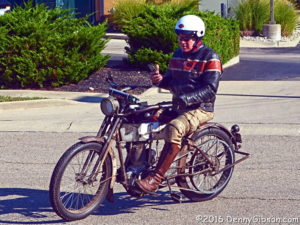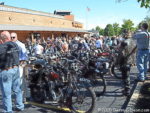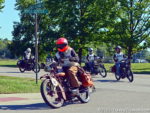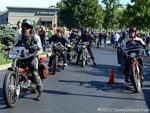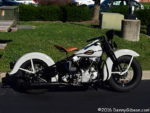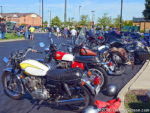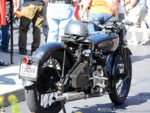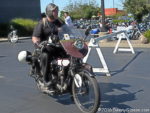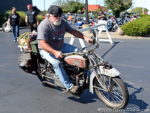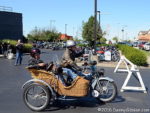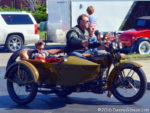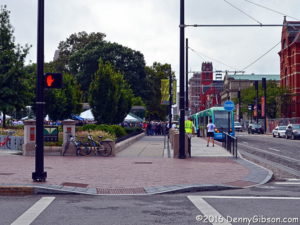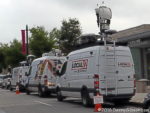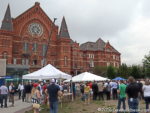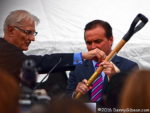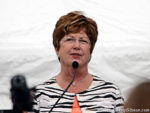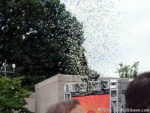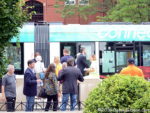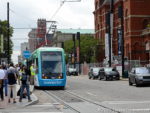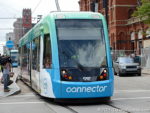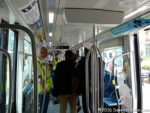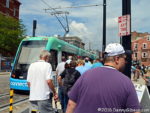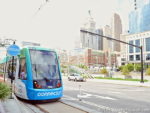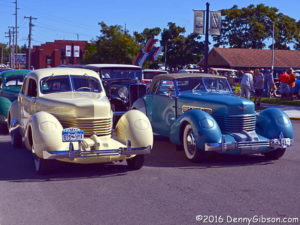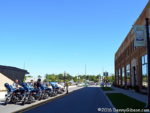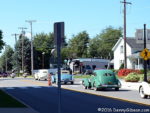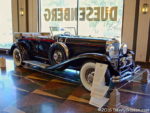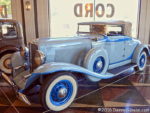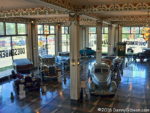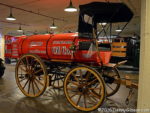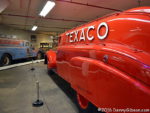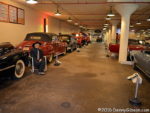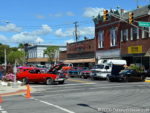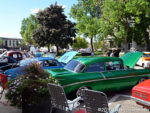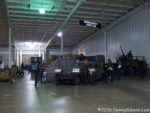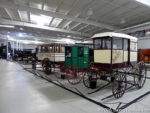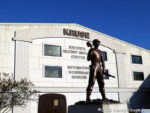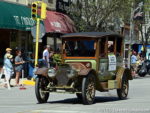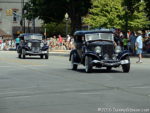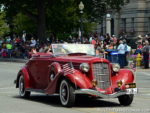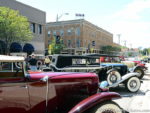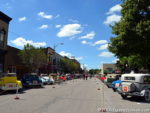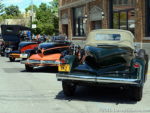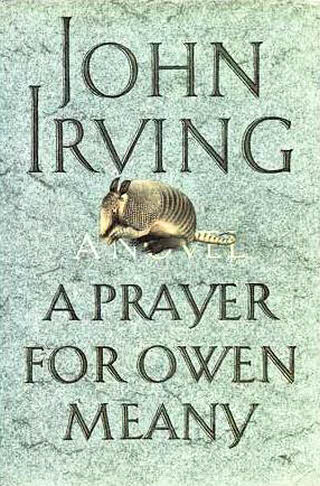 I’m not really going to review this twenty-seven-year-old book that I’m guessing thousands of professional reviewers have written millions of words about. When I first read it, more than two decades ago, I thought it was one of the best books I had ever encountered. A recent re-read only reinforced that. The re-read was prompted by plans to attend a performance of a play based on the novel. I’m going to say some things about that performance but this really isn’t a review of it either. In fact, I find myself stumped in trying to explain just exactly what this is. Whatever it is, it was triggered by my recent experience with a book and a play.
I’m not really going to review this twenty-seven-year-old book that I’m guessing thousands of professional reviewers have written millions of words about. When I first read it, more than two decades ago, I thought it was one of the best books I had ever encountered. A recent re-read only reinforced that. The re-read was prompted by plans to attend a performance of a play based on the novel. I’m going to say some things about that performance but this really isn’t a review of it either. In fact, I find myself stumped in trying to explain just exactly what this is. Whatever it is, it was triggered by my recent experience with a book and a play.
From the moment I saw that Cincinnati’s Playhouse in the Park would be presenting A Prayer for Owen Meany I wanted to see it. I knew nothing about the play but recalled how much I loved the book. As is often the case, I recalled my love of the book better than I recalled the details of it and decided that reading it again would be a wise move. I reserved a digital copy at the library but the Playhouse’s announcement had obviously given others the same idea. The waiting list was long and it moved slowly. It became apparent that I might not even receive a copy before I saw the play let alone have time to read it. I turned to Amazon where money solved the problem. A little more money provided a new experience.
When I purchased a Kindle version of the book, I was given the option of adding an audio version from Audible for a few dollars more. I bit, thinking that it might help me get through the book before showtime. It did. The two versions were synchronized so that I could listen as I walked to a nearby restaurant, read while I ate, then listen some more as I walked home with Kindle picking up where Audible left off and vice versa. I don’t think it will become my default method of “reading” but it is a very effective way of using all available minutes to move forward.
So I finished the book and made it to the play. I have no illusions that a play or movie can be a complete replacement for a well-written book but I do know that a well-done play or movie can sometimes cut through minutia while preserving a theme and making it more easily accessible to more people. This was not, in my opinion, one of those times.
First, in defense of the production, the Playhouse cast and staff did an admirable job in staging and performing a complex script. Second, in defense of the playwright, the novel itself is certainly complex with loads of characters and locations, multiple time periods, and a narrator whose inner thoughts sort of fuel the whole thing. That this is built atop a doubly volatile core of both politics and religion no doubt makes a stage adaptation quite challenging.
I’ve just one knock on the production. The acting was excellent as was the use of space. The flying, however, wasn’t so good. The script (I assume) calls for Owen Meany to go airborne several times in a Mary Martin/Peter Pan sort of way. The problem was that, before each lift-off, actors spent on-stage time connecting the support apparatus to Owen’s body. The audience was left with a more vivid memory of the preparation than of the “flight”.
That aspects of the novel needed to be eliminated in a stage play goes without question. I don’t even question screenwriter Simon Bent’s choices of what to eliminate. Big stuff from the book that didn’t make it to the stage include John Wheelwright’s three cousins, his lengthy comments on the Iran-Contra affair, and the removal of his finger to avoid the draft. The armadillo that soloed on the cover of the first edition didn’t make it to the stage either. Nor did Owen Meany’s time as The Voice or his conflicts with school administration that cost him scholarships and led to his enrollment in ROTC. I recognize the fact that to include these or some of the many other things eliminated might have complicated things beyond reason. Whether or not the simplification made the play accessible and understandable to anyone unfamiliar with the book is not for me to say.
I expect things to be simplified when a book goes to the stage or screen. Not only must things be eliminated but sometimes things must be simply changed. Changing the armadillo to a ball and glove makes sense. Adding the Lenny Bruce scene as a device to express some inner thoughts is reasonable. But why change the day of Owen’s death? I don’t think it’s particularly important in the book. There it is July 8 and a follow on to Independence Day but is not, as far as I can tell, otherwise significant. If there is a purpose to changing it to March 31 in the play, it’s lost on me. And it’s irritating.
The majority of comments on the Playhouse’s Facebook page are positive. Some are glowing. Only a few are really negative. Some mention language, others the flying apparatus, and some give no reason at all. It would not have surprised me if people who had not read the book found the play hard to follow but that doesn’t seem to be the case. I only spotted a couple of comments suggesting that. More common are comments from people who intend to read the book now that they’ve seen the play. That’s a good thing, I think, because I believe they’ll find that a picture — even a moving picture — isn’t always worth a thousand words.
Added 21-Sep-2016 8:00: A Prayer for Owen Meany begins with the narrator stating “I am a Christian because of Owen Meany.” Questioning then embracing faith is the book’s most basic theme. What I’ve personally questioned is my attraction to a book whose message seems so different from what I believe. Skillful writing and the fact that it makes me think must be the reasons. The following quote from John Irving makes me much more comfortable with my admiration for a book that seems almost an endorsement of Christianity.
I’m not religious. In writing “A Prayer for Owen Meany,” I asked myself a fairly straightforward question — namely, what would it take to make a believer out of me? The answer is that I would have to meet someone like Owen Meany. If I’d had Johnny Wheelwright’s experience in that novel, I would probably be a believer too. But I haven’t had that experience — I only imagined it.
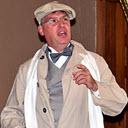 This picture is from my 2012 LH Centennial Kick Off trip. On September 10, 1912, a meeting was held in Indianapolis, Indiana, which would ultimately result in the formation of the Lincoln Highway Association. The LHA was incorporated on July 1, 1913, and a big party was planned for the upcoming centennial so why not celebrate the centennial of the get together that started it all. Although they couldn’t quite match the date, that is essentially what the Indiana Chapter of the LHA did and I was there. The 2012 event was held on September 22 in the same building as the 1912 event with an actor playing the role of Carl Fisher, the man who called that first meeting. In addition to the “reenactment” at Das Deutshe Haus, we got to visit several historic automotive related sites in Indianapolis.
This picture is from my 2012 LH Centennial Kick Off trip. On September 10, 1912, a meeting was held in Indianapolis, Indiana, which would ultimately result in the formation of the Lincoln Highway Association. The LHA was incorporated on July 1, 1913, and a big party was planned for the upcoming centennial so why not celebrate the centennial of the get together that started it all. Although they couldn’t quite match the date, that is essentially what the Indiana Chapter of the LHA did and I was there. The 2012 event was held on September 22 in the same building as the 1912 event with an actor playing the role of Carl Fisher, the man who called that first meeting. In addition to the “reenactment” at Das Deutshe Haus, we got to visit several historic automotive related sites in Indianapolis.
 I’m not really going to review this twenty-seven-year-old book that I’m guessing thousands of professional reviewers have written millions of words about. When I first read it, more than two decades ago, I thought it was one of the best books I had ever encountered. A recent re-read only reinforced that. The re-read was prompted by plans to attend a performance of a play based on the novel. I’m going to say some things about that performance but this really isn’t a review of it either. In fact, I find myself stumped in trying to explain just exactly what this is. Whatever it is, it was triggered by my recent experience with a book and a play.
I’m not really going to review this twenty-seven-year-old book that I’m guessing thousands of professional reviewers have written millions of words about. When I first read it, more than two decades ago, I thought it was one of the best books I had ever encountered. A recent re-read only reinforced that. The re-read was prompted by plans to attend a performance of a play based on the novel. I’m going to say some things about that performance but this really isn’t a review of it either. In fact, I find myself stumped in trying to explain just exactly what this is. Whatever it is, it was triggered by my recent experience with a book and a play.